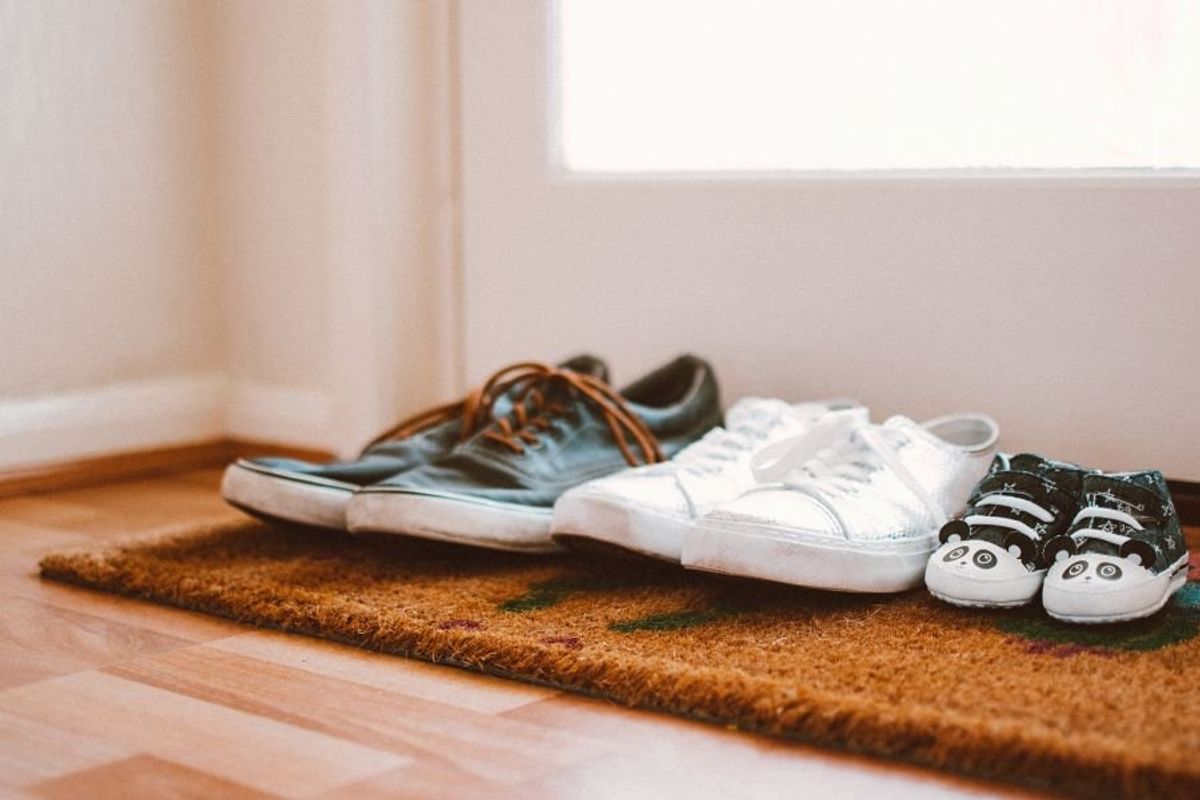
Growing up nearly everyone knew of one house that didn’t allow people to wear shoes inside. It didn’t matter if you accidentally wore your socks with the hole in them, there were no exceptions–shoes off. For many folks it was just seen as a quirk for that particular family and there wasn’t much thought given into why they were adamant about enforcing the rule.
But it turns out that wearing shoes inside is more of a western culture thing than a global one, which makes Americans a minority in keeping outside shoes on while inside the house. It would seem that other countries may have had a bit more of an understanding on why it’s a bad idea to wear shoes inside.
Common sense tells us that wearing shoes inside means you’ll be sweeping and mopping more often than you’d like. Of course you track in dirt but there are apparently hundreds of bacteria and fungi that you’re tracking in that can cause your family to get sick.
According to the Journal of Applied Microbiology 13 different studies supported the hypothesis that the bottoms of shoes carried infectious agents. “Methicillin-resistant Staphylococcus aureus, Clostridium difficile and multidrug-resistant Gram-negative species among other pathogens were documented on shoe bottoms in the health care setting, in the community and among food workers,” the journal says.
If you’re thinking spraying or wiping down your shoes with Lysol or Clorox will do the trick, think again. “A number of decontamination strategies have been studied of which none have been shown to be consistently successful at disinfecting shoe soles,” Journal of Applied Microbiology reports.
But you’ve been wearing shoes inside all this time, why do anything differently now? Well, you don’t have to become a no shoes inside household if it seems like too much of a hassle. Experts just want people to have the facts so they can make their own decisions on how best to keep their family healthy.
Dr. Nicole G. Freels, a podiatrist started discussing the importance of removing their shoes upon entering their home after watching a segment on the Today Show where they cultured an audience member’s flip flops. She told Southern Living, “They cultured out hundreds of different microbes, both bacterial and fungal! Ever since, I have been educating my patients on the potential risks of wearing the same shoes inside the house, and out.”
Dr. Charles Gerba, a professor and microbiologist at the University of Arizona conducted his own research in 2016. The professor swabbed a brand new pair of shoes he had only been wearing for two weeks only to find 440,000 units of bacteria with 27% of it being a deadly form of E. Coli. Yikes. There’s nothing quite like tracking Clostridium difficile (C. diff), a drug resistant extremely contagious intestinal bacteria and E. Coli into your house on a daily basis.
Makes you wonder if this is where those stomach viruses come from that seem to tear through households on repeat during certain months of the year. Honestly, knowing that our shoes track in so much stuff may make you want to figure out a way to get around by levitation. Someone should get on that discovery, quickly.
In the end, wearing shoes inside is still a personal choice even if it may make the experts hair stand on end. But if after reading all about it makes you want to boil your shoes and scrub your floors for hours, you can toss a shoe rack next to your door as a reminder. You can also buy disposable booties that fit over your shoes to keep the bacteria off your floors and in the trash where it belongs.
